As an Amazon Associate I earn from qualifying purchases.
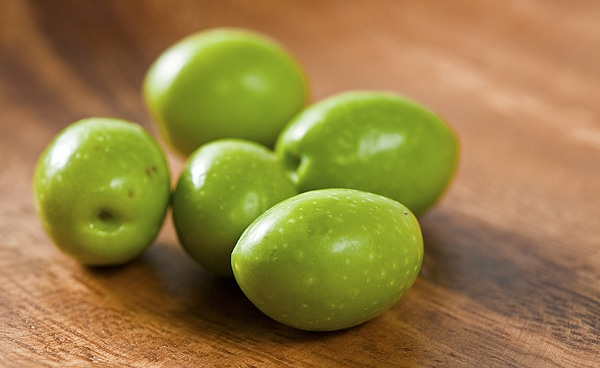
Lye. Isn’t that the stuff the Mafia uses to dissolve the bodies of those who’d made an unfortunate choice to use another waste disposal or vending machine company? Isn’t it drain cleaner, a deadly poison? So how on God’s Green Acre can lye be useful in the kitchen?
Relax. I am here to tell you that lye can be your friend, especially when it comes to curing green olives. A good lye cured olive, I have discovered, is uniquely smooth and luscious in a way that brine or water-cured olives can never be. Done right, they can be <gasp!> even better than a brine-cured olive. Seriously.
Let me start by admitting that I was as terrified about using drain cleaner to cure olives as you are. Intellectually I knew it would work, and knew I’d eaten lye-cured olives before, as have most of us: They are those nasty black canned things also known as Lindsay olives. That knowledge, however, did not bolster my desire to do any lye curing anytime soon.
Note: If you are looking for those instructions on how to brine-cure or water-cure olives, click here. I’ve settled on a process I am happy with, and which gives me great results. Brine curing is easy, and I am doing it again this year — but it takes many months. Water curing takes about a month, and the resulting olives are good, but not fabulous. So this year, when my friend Elise said a neighbor had olives he wanted us to pick, I decided to do the lye cure.

Before we headed out, I did some research. Actually, I did a lot of research. I’d seen all sorts of references to how the lye cure — actually a cure in water that had percolated through wood ashes, which are a source of lye — being used “since Roman times.”
OK, show me the proof. Many hours of searching later, I couldn’t get any closer than a generic “Romans.” Grrrr… Then a colleague on a food history-uber geek listserv I belong to saved the day. Apparently the Roman agricultural writer Rutilius Taurus Aemilianus Palladius is the source of this, in his De Re Rustica, written in the 300s.
“Mix together a setier of passum, two handfuls of well-sifted cinders, a trickle of old wine and some cypress leaves. Pile all the olives in this mixture, saturate them with this paste in garnishing them with several layers, until you see it reach the edges of the containers.”
Passum is freshly extracted grape juice, so the lye in the ash-water interacting with this would make an interesting brew. There would be so much sugar going on in there that you could get both a lye cure and fermentation going at the same time. Freaky. Might have to try that next year…
Since then the Spanish have been masters of the lye cure. Most Spanish table olives are cured at least in part with lye, but their process is far different than that used in to make the hideous Lindsay olive. I am modifying a method I found in an agricultural book written in 1817.
Incidentally, other popular modern olives that use a lye cure include the French Lucques, Italian Cerignola and Spanish manzanilla.
First thing you need to know about curing olives with lye is that you must use fresh green olives. Not black ones, not half-ripe ones. The lye process softens the meat of the olive, so you want it as hard as possible (Insert “that’s what she said” joke here).
Lemme tell you, the quality of the olives Elise and I picked was the best I’ve ever seen. Normally I pick in public parks, which in our hot Sacramento summers can skimp on watering, stressing the trees. Stressed trees mean the olives will be more susceptible to that scourge of olivedom, the olive fly. The larva of this nasty little bug burrows into an olive and eats it from within. Thankfully infested olives are easy to spot: They will ripen faster than healthy olives, and there is a tell-tale scar on the olive that looks like this:

Toss that olive. While the worm is not poisonous, I prefer my olives sans extra protein, thank you.
Green olives in hand, I headed out to the hardware store in search of lye. The traditional brand to use is the classic Red Devil Lye, which is an old brand of drain cleaner. But all the science I’ve seen says anything that is 100 percent sodium hydroxide works, so scan your drain cleaner well to make sure it is nothing but lye — Drano used to be this way, but apparently has additives now. Don’t use it.
But Hank, shouldn’t you use “food grade” lye? Well, after much research, I can find no hard evidence — none — that says there is any difference between so-called “food grade” lye and non-food grade lye. So, you can order the food grade stuff through that link above, or go to the hardware store and use a 100 percent sodium hydroxide drain cleaner. I’ve used both.
Isn’t lye a deadly poison? Sorta. Sodium hydroxide is one of the nastiest bases we know of; a base is the opposite of an acid. On the PH scale, distilled water is the median, at 7. Your stomach acid’s PH is about 1 1/2 — enough to burn a hole through a rug. Lye’s PH is 13.
Bottom line: Raw, pure lye will burn the hell out of you, but it is not a systemic poison. That means that even if you eat an olive that still has a lot of lye in it — as I did — all you will taste is a nasty soapy flavor. If you eat a bunch of them, the alkaline PH in the olives will counteract your stomach acid and it might give you indigestion. That’s all, and that’s a worst-case scenario. That said, you need to be damn careful at that one moment you are moving raw, pure lye from the container to the crock you are curing into.
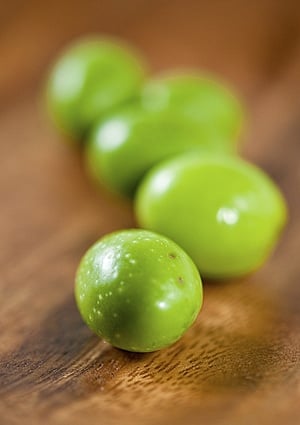
LYE CURING STEP BY STEP
Follow these instructions and you will be fine:
- Wear glasses if you have them. Wear long sleeves and pants and closed shoes. You will probably not get lye on you, but better to be safe.
- Pour 1 gallon of cold — not tepid, not hot, but cold — water into a stoneware crock, a glass container, a stainless steel pot, or a food-grade plastic pail. Under no circumstances should you use aluminum, which will react with the lye and make your olives poisonous.
- Using a measuring device that is not aluminum, add 3 tablespoons of lye to the water. Always add lye to water, not water to lye. A splash of unmixed lye can burn you. Stir well with a wooden spoon.
You’re done. You use cold water because the reaction between lye and water generates heat, and the hotter the lye-water solution, the softer the olives will become. Now that it is mixed, the lye solution can’t really hurt you, so go ahead and add your olives.
Stir them in with that wooden spoon and put something over all the olives so they do not float. This is vital. Olives exposed to air while curing turn black. Don’t worry, they will absorb the water and sink in a few hours, but to start you need to submerge them.
Let this sit at room temperature for 12 hours. The alkaline solution will be seeping into the olives, breaking the bonds of the bitter oleuropein molecules, which then exit the olive and go into the water. After 12 hours, pour off the solution into the sink. It should be pretty dark in color.
Quickly resubmerge your olives in cold water. You want to minimize the exposure to air. You now have cured olives. I know, I know, a lot of recipes say to repeat the lye process another time — sometimes three more times — but that will destroy a lot of flavor; there are a ton of water-soluble flavor compounds in an olive that the lye solution washes away. Trust me. Your olives, unless they are gigantic, will not be overly bitter even after just a light, 12-hour lye soak.
Now you need to cleanse your olives. They will have a fair bit of lye solution in them now. Keep changing the water 2-4 times a day for 3-6 days, depending on the size of the olives. After 2 days, taste one: It should be a little soapy, but not too bitter. It’ll be bland, and a little soft. Once the water runs clear you should lose that soapy taste.
Time to brine. If you have large olives, make a brine of 3/4 cup salt to 1 gallon of water. And use good salt if you can. You will taste the difference. Kosher salt is OK, but ideally use a quality salt like Trapani, which is from Sicily. It’s not that expensive, but it is worlds better than regular salt.
Let the olives brine in this for 1 week. Keep them submerged, or you will get darkening. After a while they will sink. After 1 week, pour off the brine and make a new one, only this time, use 1 cup of salt per gallon.
Now you can play. The traditional Spanish cure would add some vinegar to the mix, as well as bay leaf and other spices. I’ve played with adding a touch of smoked salt, chiles, black pepper, coriander, mustard seed, garlic — think Mediterranean flavors.
But before you do this, taste your freshly brined olives. It will be a revelation. They will remain beautifully green, unlike brined olives. Salty, olive-y and very, very buttery. This is the Lay’s Potato Chips of olives. I dare you to eat just one.
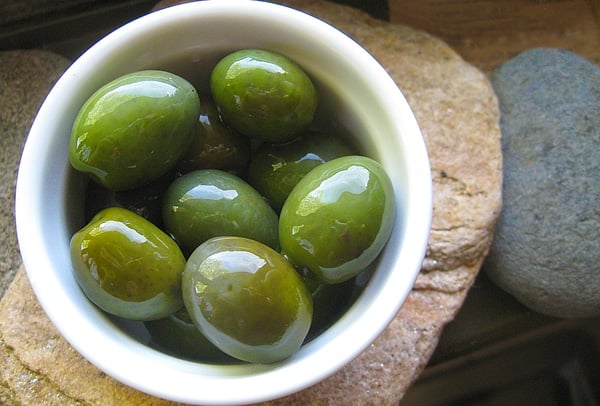
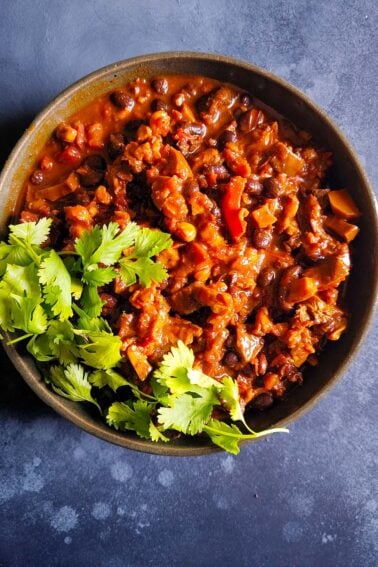
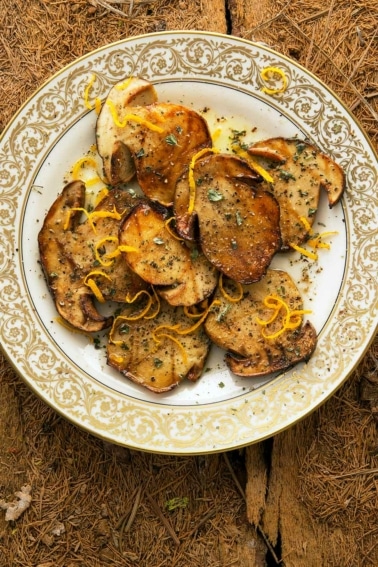
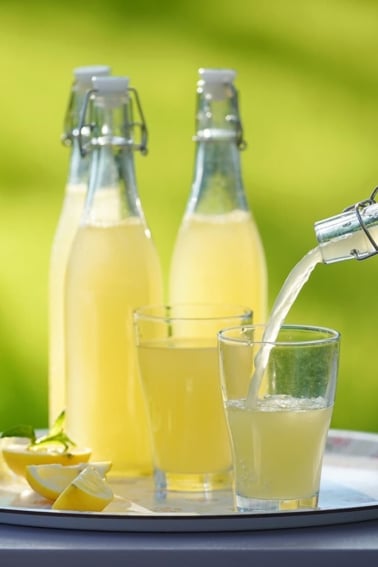
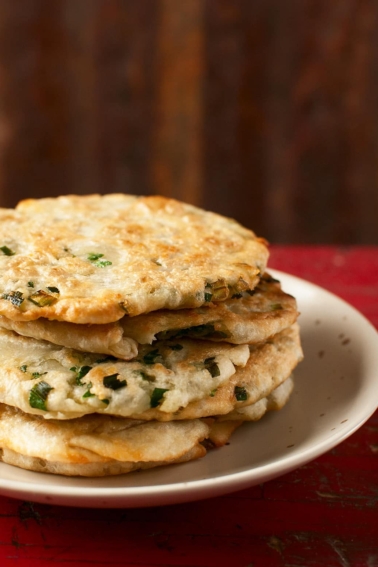
my grandmother uses lye to cure olives, easily available at the local spice store and not the hardware store. As for me, I much prefered salt cured olives, though much more time consuming to make, it preserves more of the olive flavor. I soak the olives between 7-10 days to remove the bitterness. This year I am tryng black olive as well but that’s a completely different method.
Read your blog as I was preparing my olives. I used a recipe from a friend who used to make olives in Arizona. We have lots in my neighborhood, they used to think that olive trees were the best landscaping choice around. Now they recommend not planting them because of the mess. Anyway, the neighbors were all glad that I chose there trees to pick some great olives. I picked 45 pounds. Actually I dragged my husband out to help. That cost me big time. After a lye solution for 12 hours they were done. I then put them in quart jars with salt, vinegar and spices. They are soo good. I cooked the jars and added hot water so they sealed. I am not sure how long they will last. I decided to put them in the fridge to be safe. I have another gallon soaking in salt now, not sure what I will do with them.
Good, information here. Especially the bit about the fruit fly. It upsets me that they discovered my tree and severely reduced my joy of olive curing. the 5th year after the infestation, the tree didn’t produce fruit at all. Now, the fruit is very small, and the tree seems to be only infested on the East facing side… I wonder if there is any significance to that. Anyway, I bought some olive fruit fly traps but forgot to hang them in Feb. when they mate. Next Feb. I hope to remember so I can see if it works.
Lye solution- the lye, even when mixed with water, would burn pretty badly if it slashed up onto my arm… long sleeves would tend to hold the lye/water solution to my skin and allow it to burn more, so I found that short sleeves are better and keeping a bowl of vinegar nearby is the best. It immediately neutralizes the lye solution when you dunk the skin into the vinegar, pour it over the burning area or soak a rag in it and dab it onto the burning area. Instant relief..
About the lye, I’m sure most have discovered that Red Devil Lye is no longer available over-the-counter, so I get mine at essentialdepot.com. I get food grade because I heard that plumbing grade has a higher metal content. Some folks just can’t get past the “Drain-o” look-alike either. Food grade lye at least comes in a food storage type container and is easier to dispense. I used Red Devil Lye for years until they took it off the shelves, and it worked well… it’s all rinsed and neutralized anyway.
Last comment: A tip for keeping the floating fruit submerged: lay a dish towel evenly across the top of the olives… make sure the sides of the towel reach to all sides of the curing container.
Great stuff here.
Hank,
I just found your blog looking for a lye cure recipe for olives. I am in Orland, about 90 minutes north of Sacramento and one of my best memories from my childhood is the olives that my grandfather would cure. Olives are plentiful up here so it is not hard to get them. I currently have a five gallon patch curing, this is my first attempt so I looking forward to the results.
Also, I really like your blog as I live in a rural area and love to hunt, fish and cook.
Any thoughts on using baked baking soda instead of lye? McGee suggests using it instead of kansui for asian noodles: https://www.nytimes.com/2010/09/15/dining/15curious.html
As an aside, since this is my first comment here, I’d like to add that I love your blog! Been following for awhile and am always inspired to try something new either in the kitchen or outdoors every time you post.
You got me all inspired last year on doing my own olives. This summer to my amazement I stumbled on a shopping center that has lush landscape and about 20 olive trees. Two weeks ago I experimented with about three pounds worth. Half green half black. Indeed, I was afraid of lye so I used some of my chemistry background to make a test. I banked on the high pH of lye/water to break down the nasty bitter stuff. So I tried another chemical to raise the pH of the bath. I used one part sodium bicarb one part kosher salt and ten parts water. I am ten days in and almost all the bitter stuff is gone. Because of this post I went out and got ten pounds more! Picking long after dark and the beer ran out. I will not be afraid and will use lye on some of these. Want to compare the methods. Looks like lye/brine takes approximately about the same amount of time.
BTW the “soapy taste” you mention is because you actually made some soap. Lye plus fat (olive oil) = soap. This also means tiny bit less fat in the end product. I wonder if the bicarb method will be distinguishable in ‘butteryness’ from the lye method?
One quick question: Did you “score” the flesh of the olive to allow the lye to penetrate? or was it thru the skin only?
Thanks again Hank. Keep up the good work. Count me in to buy a signed copy when your book is ready.
Okay, I’m sold. I’ll be curing my own olives for Thanksgiving. I can’t wait!
Hank-
What would you say is the shelf life of the end product? If I buy 10 lbs of olives and cure them using this process, I would want to make sure I can enjoy them for some time since I am the only one who loves olives in my house.
For the record, Hank isn’t kidding when he says these olives are like potato chips. They are so good! Totally addictive. I’ve made brine cured olives, and these lye cured olives taste so much better. And the process to make them is a lot faster too.
I did a few lye cured olives last year for testing and they were great. This year I collected a larger quantity but forgot how long to cure – and completely ruined them after 2 days. Better to stick closely to the recipe.
Rebecca: Water-cured olives should be sliced, not smashed as many suggest. And you need to do the cure in the fridge, or weird things happen.
As for the ash mixture, Diana answers the question, but the ash-in-corn thing is another alkaline — lime, not lye. Lime’s PH is around 10.5, so still nasty, but not as nasty as lye.
Amy: yes, we have lots of olive trees around Sacramento. Around here, no one pays for olives. They are everywhere for the taking. Nice, eh?
Diana: Good tip on the lye mixing process. Thanks!
Andrew: Never weighed out my lye, but I use granular lye. You will need to use 4 tablespoons per gallon if you use flake lye. As for the salt, use 1 1/2 ounces per gallon.
I’ll say that lye is very natural, coming from ash.
Great post, and great olives, Hank!
Wow. This is fascinating. I wish olives grew in my area. I make soap using lye and am quite comfortable using it, but have never tried it with anything food related. Completely fascinating.
Could you give the salt and sodium hydroxide measurements in weight. I’m not sure about the NaOH, but 3/4 cup of salt could vary widely depending on the brand and type of salt you are using.
And I think I can answer Rebecca’s question about ashes and lye: traditionally you make lye by lining a barrel with straw and drilling holes in the bottom. You fill it up with ash and then dump in water and let it soak through. You add more ash, take the percolated water and pass it through again, and again, and again. Eventually you have made lye. So I guess… ash is to lye as Dr. Bruce Banner is to The Incredible Hulk? 🙂
Oh man, I wish I’d read this post two months ago when I was lye-curing my olives. I ended up falling asleep before the 12-hour mark, so they soaked for probably about 20 hours (shouldn’t have started the process at 2pm I guess). Sigh. This has been a poor year for my olives.
Tip: when I make soap, and to dissolve the lye for the olives too, I have been taught to add the pre-measured lye to the pre-measured water and then pour that water *over* the product to be cured, aka jar full of olives. That minimizes splashing, and minimizes overflow too if you prepared too much lye solution for your amount of olives.
I can’t wait to try this when I get some olives off my trees. Do you have olive trees that you grow?
I’ve posted a link to this page on my homesteading website.
I bought a huge 25# bucket ($40) of lye for soapmaking. Not sure if I’ll be able to use it all anytime soon, but the smaller packets are far too expensive. I live near Portland Oregon and was able to pick it up at Essential Wholesale. I don’t think they are able to ship. By the way, if there is anyone near PDX that wants to buy a small portion from me, just let me know. I did look for lye in the grocery stores, but it seems they don’t sell pure lye around here anymore. I seem to remember during my research that it had something to do with meth manufacturing.
I’d be interested in the wood ash lye method as well. I’ve tried slaking corn using it with moderate success compared to using pickling lime.
Hank, your olives look great. After reading this I called the supermarket — their fresh olives are gone for the year. Darn! But there’s always next year. Good advice about the Drano and Red Devil lye.
Sharon
*sigh*
I just brine cured about 20lbs of olives. I tried the water cure on a couple of lbs but, yeah, the bashing and bruising thing made them go all brown and nasty looking, and regardless of how often I changed the water, the smell just kept getting nastier and nastier.
I don’t know why the lye thing makes me so uncomfortable. Maybe it’s because I heard stories in anatomy class of what happens to people who drink drano (their esophagus and air passages all melt… painful death), or maybe it’s because I’m convinced that it’s not ‘natural’.
Question: what’s the ash-mixture? Traditionally corn was soaked in ash wasn’t it?… is this the same as lye?